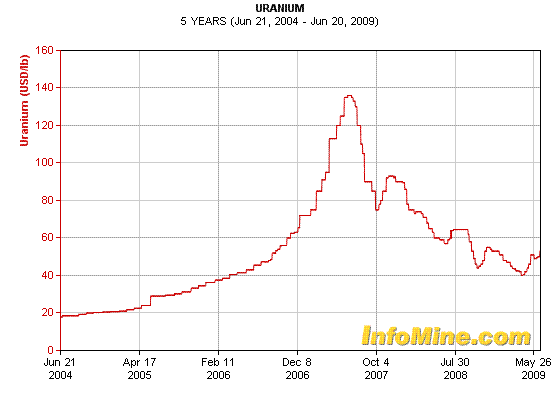Nuclear Power has a strong lure to policymakers. It is “clean”, does not dent oil reserves, and its operating costs can be close to cost competitive as long as uranium prices don’t spike.
But there are some real downside problems; and the Canadian and Ontario Governments are learning this lesson in spades. The Canadian government is finding that its chosen domestic supplier of nuclear medical isotopes, AECL-Atomic Energy Canada Limited has committed a series of gaffes, delays and ballooning cost over-runs that cast a great deal of doubt whether AECL can deliver on its multi-billion dollar plants and plans promised for the Ontario government clean energy initiative in the 20120-2016 time frame.
Lately AECL has done one better[or worse], barely 2 years after the first medical nuclear isotopes crisis, it has delivered a second one equal to the first in impact and mismanagement. This has to give the Ontario government and governments in general pause about Nuclear power for three reasons:
1)Nuclear power is far from “clean”. Its spent radioactive wastes pose thousand of years risks – and in the US a game of musical chairs has been played for nearly a half century as to who is going to accept shipped nuclear wastes into their state.
2)The reactor site itself becomes a huge waste decontamination problem because its own parts and material become exposed to radiation with resulting dangerous half-lives into hundreds of years;
3)there are huge waste radiation rod pools that must be maintained for hundreds of years in cooling water that pose a risk if the pools mechanisms fail or 3rd party terrorists achieve access to these pools and their surrounding support systems.
So while the World Nuclear Association provides a comparison of deaths due to accidents among different forms of energy production there is room for doubt. In the WNA comparison, deaths per TW-yr of electricity produced from 1970 to 1992 are quoted as 885 for hydropower, 342 for coal, 85 for natural gas, and 8 for nuclear. This seems relatively benign until you consider that Chernobyl occurred in 1986 and according to WHO was responsible for 56 immediate deaths and then maybe 4000 cancer deaths.
Hence the Energy conundrum. So the problem with Nuclear Energy is that while it appears to promise non-polluting, “clean” energy, there are some very big downside risks associated with uranium operating costs and radioactive waste management, security and disposal. Just move over to offshore oil and gas drilling, geothermal power, or carbon dioxide trapping of coal – alll present their own tough trade-offs. This is why the Obama administration needs to start-up a Manhaattan II project that looks at the current and then future energy resources but with one vital twist – instead of being secretive and cloaked in security it should be open and transparent – similar to theior own Budget Website.Only by making the debate open with good comparative and complete costings – a sort of WkionEnergy.gov can the many energy twists and turns be explored to arrive at a bottom up as well as top down nearer to optimal solution set.


Pretty nice post. I just stumbled upon your site and wanted to say
that I’ve really enjoyed browsing your posts. In any case
I’ll be subscribing to your feed and I hope you write again soon!